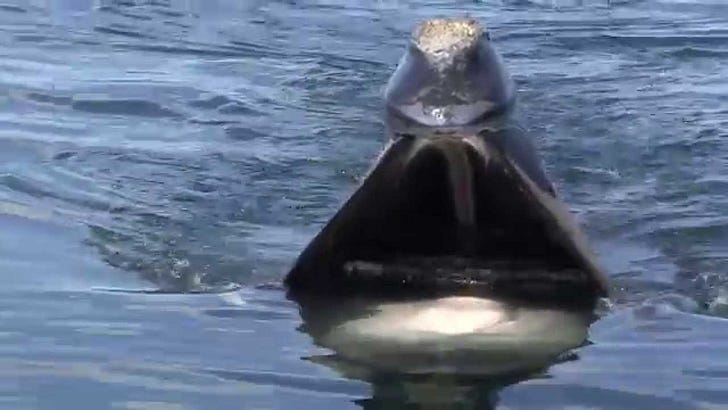Did you say, “Write ‘Wail’”?
Today’s special animal friend is the southern right whale, Eubalaena australis. It is one of three species in the Eubalaena genus; the others are the North Atlantic and North Pacific right whales. Right whales are baleen whales, which means they are filter-feeders, using baleen or “whalebone” in their mouths to collect plankton and krill from the seawater.
The Eubalaena species are called “right” whales because of features that made them the “right whale” to hunt during the Age of Whaling, which lasted until 1986. During the breeding season, the Southern Hemisphere winter months of June to August, right whales gather in coastal bays and near the shoreline of Australia, southern Africa, and South America. They are slow-moving, and dead ones float due to their thick blubber layer. They contain huge amounts of oil, meat, and baleen. By the early 20th century, they were nearly extinct.
Adult southern right whales are 43 to 56 feet long. They weigh up to 176,000 lbs. They are somewhat smaller than the northern species, and males are larger than females. They have a broad back without a dorsal fin. Their skin is black or dark gray. All right whale species have “callosities” or thickened skin patches on their heads and jaws. The callosities appear white because they are infested with “whale lice,” an external parasite related to skeleton shrimp which lives on wounds and in skin folds of many cetacean species. The patterns formed by the callosities help researchers identify individual right whales.
Right whales have an unusual behavior called “tail sailing,” which involves raising their immense tail flukes above the water to catch the wind. Humpback whales also exhibit this behavior.
They also interact with other cetaceans, such as dolphins, and are curious about boats and people. During the summer, right whales gather in far southern latitudes around Australia and feed on the plankton and krill in the near-freezing water. They migrate north in winter for warmer water and calving. Gestation is about a year, and females give birth every three to five years. The calf will be weaned and independent in about a year.
A female right whale usually has her first calf when she is 8 to 10 years old. Their lifespan is up to 70 years. IUCN rates southern right whales as Least Concern, which seems strange. Maybe this reflects the fact that they are protected throughout the world, and populations are increasing through most of their range. Predators include sharks and killer whales. Other threats are habitat disruption because of pollution, fishing line entanglement, ship impacts, and ocean noise, which disrupts their communications.



Good morning. It's still raining, but the interwebs says it's supposed to stop later this morning, and we might see the sun in the afternoon.
The Northern Atlantic right whale is critically endangered.